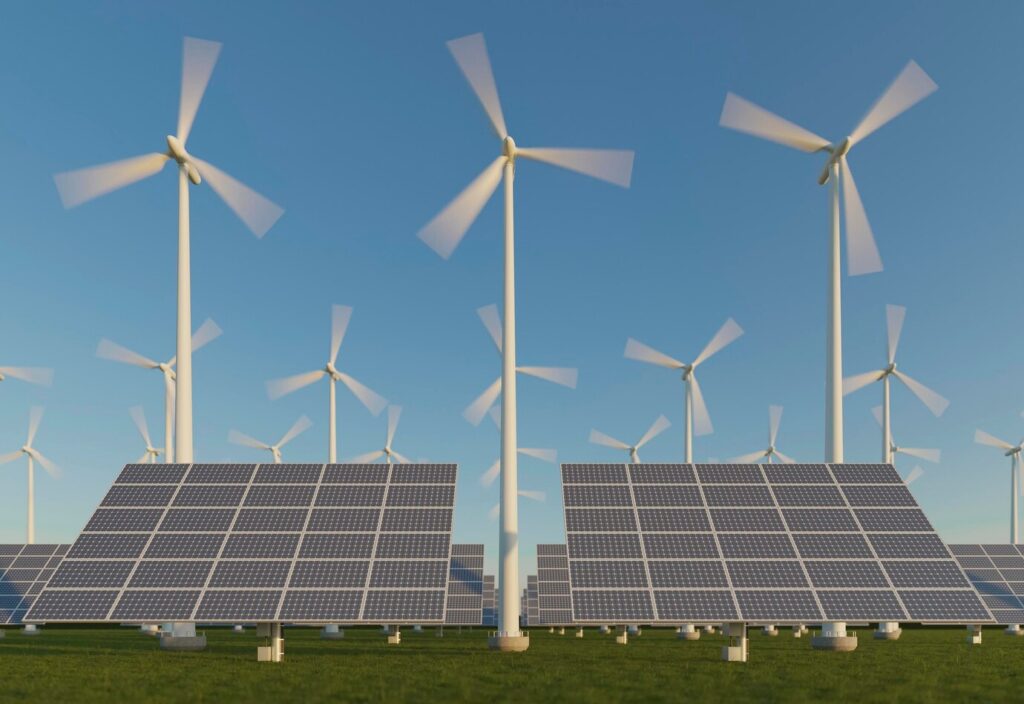Powering the Future! The Renewable Energy Revolution in Nordic Countries

The Nordic countries, including Denmark, Finland, Iceland, Norway, and Sweden, have been at the forefront of the global transition to renewable energy. These nations, known for their pristine landscapes, have embraced sustainable practices, harnessing the power of wind, water, and sunlight to drive their economies and reduce their environmental footprint. In this blog, we’ll explore the remarkable success story of renewable energy in the Nordic region.
Abundant Wind Energy
The Nordic region’s vast coastlines and open landscapes make it ideal for wind energy production. Wind turbines dot the landscape, from offshore wind farms in the North Sea to onshore installations in the countryside. Denmark, in particular, has made significant strides in wind power. The Danish island of Samsø, for example, is powered entirely by wind turbines and serves as a shining example of sustainable living.
Hydropower Dominance
Nordic countries have long relied on hydropower to meet their energy needs. Norway, with its steep fjords and powerful rivers, is a pioneer in hydropower technology. These nations have harnessed the gravitational energy of falling water to generate electricity, providing a stable and renewable energy source.
Innovation in Solar Energy
While the Nordic region isn’t known for its abundant sunlight, solar energy is still an essential part of their renewable energy mix. Sweden, for instance, has made investments in solar power and is integrating it into their energy grid. Innovative technologies, like solar panels that capture energy even in low-light conditions, have made solar a viable option.
Commitment to Sustainability
One of the key factors driving the success of renewable energy in the Nordics is a deep commitment to sustainability. These countries have ambitious climate goals and policies in place to encourage the growth of renewable energy sources. Government incentives, tax breaks, and subsidies make investing in renewables an attractive option for businesses and individuals alike.
Cross-Border Collaboration
Nordic countries have a long history of cooperation. They’ve extended this collaboration to the field of renewable energy. Cross-border electricity interconnectors allow excess energy from one country to be shared with neighbors. This collaboration ensures a stable energy supply even when weather conditions affect a particular source of renewable energy.
Grid Modernization
The Nordics are investing in modernizing their electricity grids to accommodate the fluctuations that come with renewable energy sources like wind and solar. Smart grids, advanced storage solutions, and demand response systems are being implemented to ensure a reliable and efficient energy supply.
Electrification of Transportation
Another notable aspect of the Nordic approach to renewable energy is the push for electric vehicles (EVs). With a high adoption rate of EVs, these countries are reducing emissions from the transportation sector and supporting the growth of renewable energy.
Conclusion:
The Nordic countries have not only embraced the transition to renewable energy but are leading the charge on a global scale. Through the effective use of wind, water, and solar power, commitment to sustainability, cross-border collaboration, and innovation in grid technologies, they serve as a model for how a region can reduce its environmental impact and contribute to a more sustainable future.
As the world seeks solutions to combat climate change, the Nordic countries remind us that the elements themselves can provide a path to a greener, more sustainable future.

